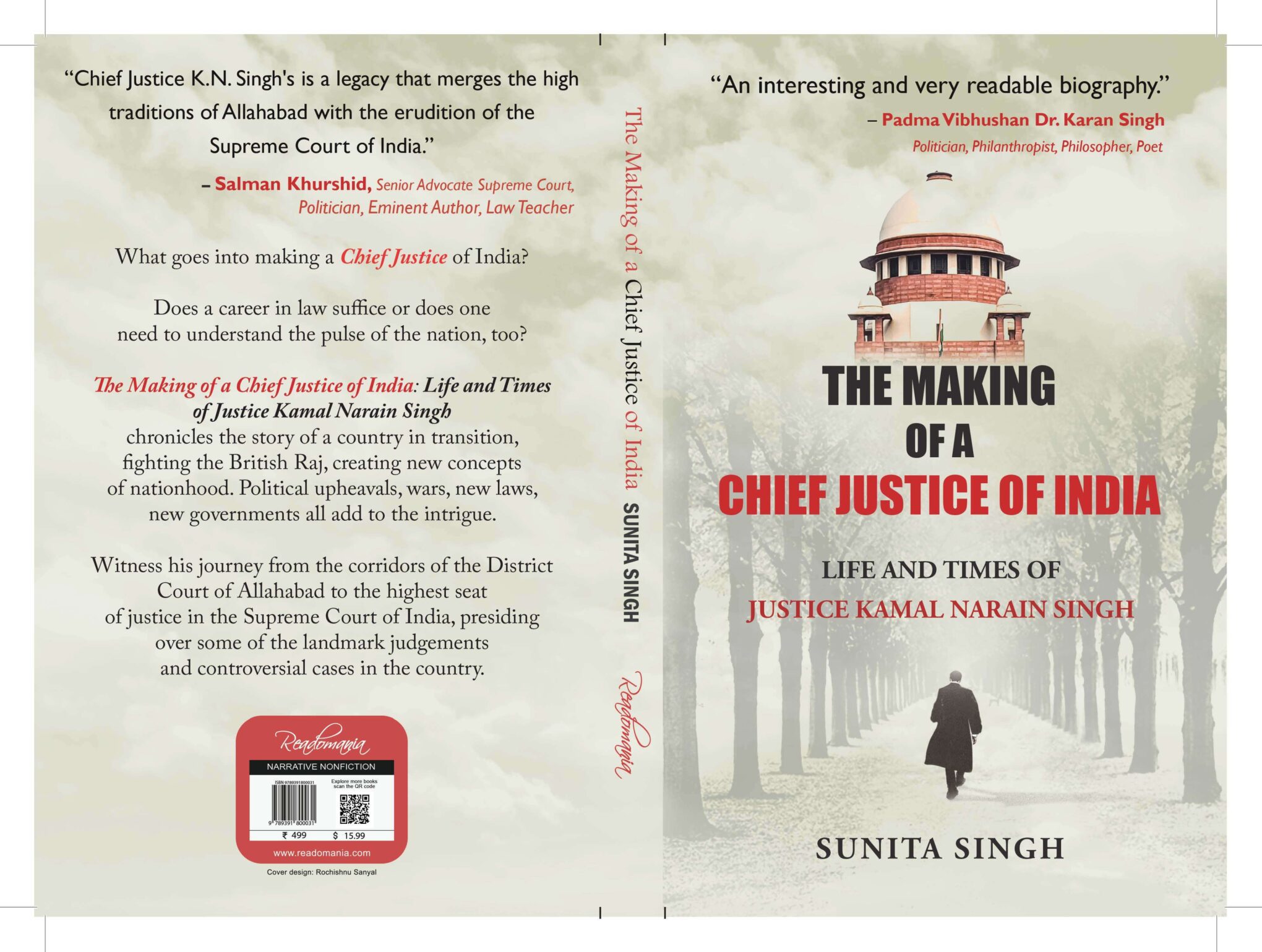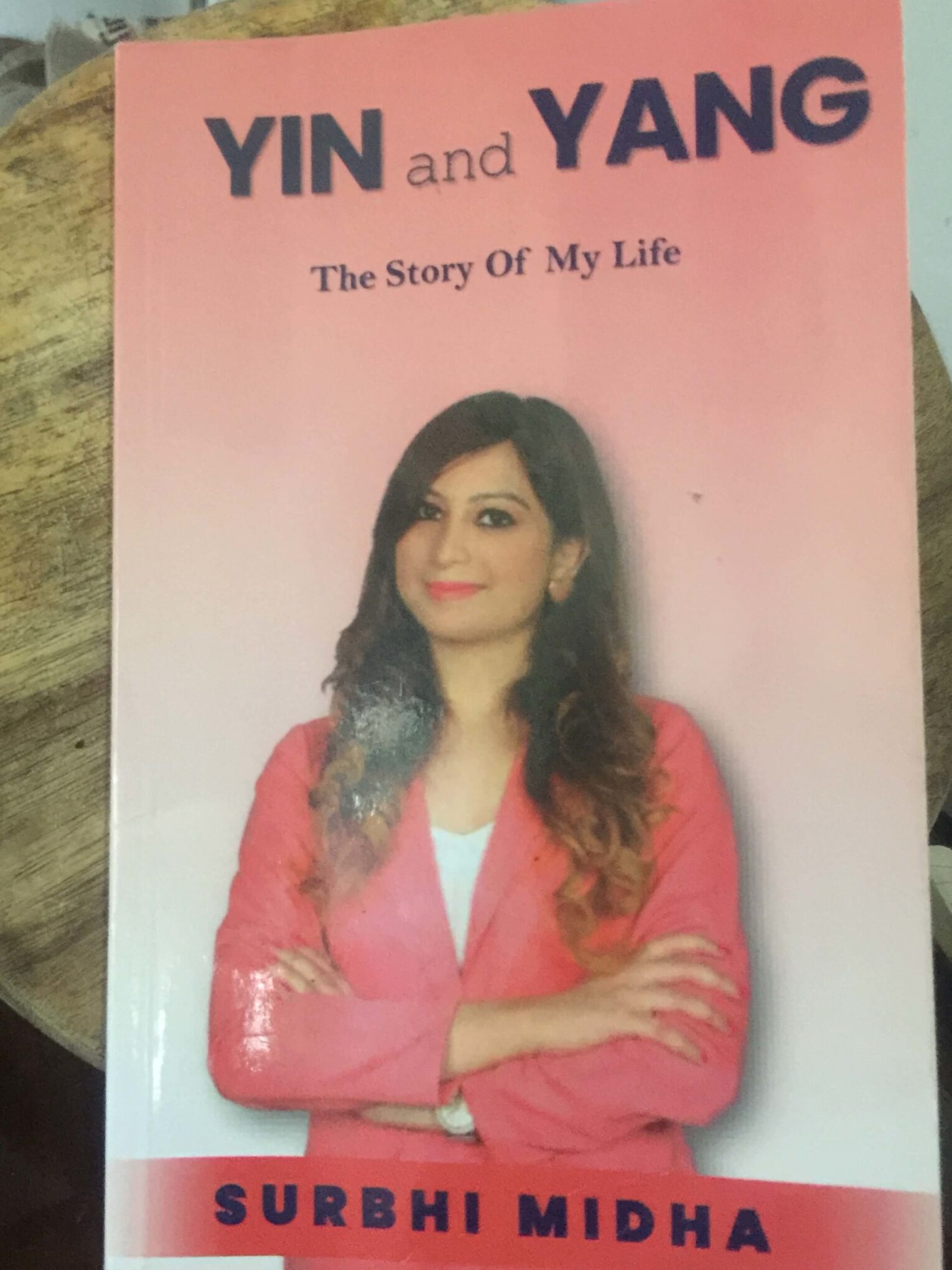Reading Time: 5 minutes
Smitha reviews the biography of the former Chief Justice of India (CJI), Justice KN Singh, The Making of a Chief Justice of India, by his author daughter Sunita Singh for Different Truths.
The author begins the book with the line, “In 1926, India was 21 years away from Independence, and George V was celebrating the birth of his grandchild, Elizabeth Alexandra Mary Windsor, who would later become Britain’s longest-serving monarch, Elizabeth II…Meanwhile, on a cold winter day, in a dusty village of Northern India, a petite young woman was in the throes of labour while her husband stood tense.”
It’s uncanny that the day I began reading the book, the 8th of September, was the day the Queen breathed her last, and so did Justice KN Singh. It was a freak coincidence.
The foreword written by the author’s brother caught my attention. He uses the line,’ If you can walk with Kings-nor lose the common touch…’ from the poem, ‘IF’ by Rudyard Kipling to describe his father. It came as a pleasant surprise as I have often felt the following lines from the same poem describe my father best- ‘If you can make one heap of all your winnings- And risk it on one turn of pitch-and-toss, -And lose, and start again at your beginnings- And never breathe a word about your loss.’
The Story
The book provides the history of India over 87 years in a gist that is easy to understand. The author weaves the story of KN Singh (CJI) with that of the country. So, what you get is an abridged version of not only the life of a man who held one of the highest positions in the country but also the struggle for independence of the largest democracy in the world in 1947 (in which the CJI played a small role, as a twenty-one-year-old and the aftermath of the struggle which includes the partition (India and Pakistan); China’s attack in 1962 and India’s retaliation; the split between Pakistan and Bangladesh in 1971 and India’s involvement which is coincidentally what I read on my flight to Dhaka.
Heroes of the freedom struggle, Nehru (India’s first PM), Gandhi (the Father of the nation- the man behind India’s non-violence movement), Rajendra Prasad (the first President of India, Lal Bahadur Shastri (India’s second PM, who died of a heart attack in Russia, the night on which he signed the Tashkent agreement, to end the war between India and Pakistan) that most Indians have read about, come to life in this book through the heartwarming stories the author shares, and had access to being the daughter of the CJI(KN Singh was an ardent supporter of the freedom movement in his youth and then went on to specialise in Election law and therefore was closely connected with these people). The author shares pictures from the family album of Vijaya Laxmi Pandit (Nehru’s sister) with CJI K.N. Singh and his wife, Krishna Kumari, the Justice and Pt. Nehru, Justice KN Singh is playing golf; the justice is taking oath as CJI and him in his chamber at the Supreme Court.
Some excerpts from the book
‘Before Shastri left for Kashmir, Nehru enquired from him, if he had a coat, to protect himself from the cold. Pandit Nehru was aware that Shastri was a simple person, who lived with just the bare necessities, so he got his overcoat altered and gave him a cap, too, so that Shastri was sufficiently protected against the cold weather conditions in Kashmir.’
‘It is said that by the time she got married, Motilal Nehru had already become an active proponent of Swadeshi and wanted a simple wedding, while her mother wanted a traditional Kashmiri one. Motilal Nehru was adamant that everyone should wear Khadi, including his daughter, the bride. However, khadi was rough cloth, not suitable for dying in pink, which was the traditional wedding colour for Kashmiri brides. But, then, just a few days before the wedding, Vijaya Lakshmi received a very fine khadi saree, woven by Kasturba Gandhi, which could easily be dyed pink.’
Learnings from the book
Hard work and family time go hand in hand: KN Singh’s ability to work hard and yet make time for his family and friends stands out as an example to all. Anyone who reads the book will think twice before using ‘work,’ as an excuse for not being able to make time for those who matter.
A bird’s eye view of the legal system: Enough to understand that being a judge is not child’s play. KN Singh’s story shows the journey one must take, from being a student of law to reaching the highest position in the Indian legal system.
A peek into India’s history: The author references significant political events that took place in India from 1926 to 1987. It serves as a quick revision for those like me who tend to forget what happened first and what happened next. It brought back memories of things I’d heard my parents or family talk about. For instance, the milk shortage in India in the seventies – I remember my mother telling me how my dad would finish work and stand in a queue to collect milk from the store. He would go from store to store collecting milk, as I, was a very hungry baby. There’s another one I had heard about a three-year-old me going from door to door with my uncle showing my palm in the upright position (the symbol of Congress), asking for votes. This would be the election in which Indira Gandhi lost.
Another thing that stood out was Rajiv Gandhi’s achievements when he served as P.M. of India, which I had forgotten. ‘He reduced the voting age from 21 to 18 and brought about policies to modernise higher education and also set up Jawahar Navodaya Vidyalaya, which provided free residential schools for classes six to twelve in rural areas. He also laid the foundation of the Panchayati Raj System aimed at taking democracy to the grassroots level. However, it was in the field of computers and telecommunications that a revolution occurred…It was during Rajiv’s time that MTNL was set up, and Public Call Offices or PCOs in rural areas connected them to the world outside.’
Landmark cases
The author refers to landmark judgements by KN Singh and events that took place during the period of the book. Among these, the decisions taken regarding the death penalty in criminal cases and decisions taken to protect the environment for the future of the world indicate that the Chief Justice was a man who did not take decisions to solve a specific case but one who saw the bigger picture and solved the root problem. An example was the Ganga cleaning case in 1987. The author says, ‘The judgement was a futuristic one, especially about asking schools to teach environmental education and awareness and directing the Central Government to get textbooks written for it and to distribute it to institutions free of cost so that children were taught the need for maintaining cleanliness both inside and outside the house. The bench also told the government to ensure that teachers were trained to teach the subject.’
Kamal Narain Singh, in his judgement, said, ” We are conscious that closure of tanneries may bring unemployment, loss of revenue, but life, health and ecology have greater importance to the people, N.P.V.’
Language: Events that have shaped the country’s history and every Indian’s life are written with refreshing simplicity. It’s easy to understand, and it is not a heavy read despite talking about essential things.
Who is the book for?It’s perfect for Indians who have not been able to study Indian History (during British rule). While there’s only a passing mention of events and names of people who mattered, it’s an excellent place to start. You can always google and read more about the events and people. I found it was a good recap of the things I had forgotten, and I have asked my girls, who have had an international education, to read it, so they can better appreciate the country’s hard-earned freedom without feeling bogged down by too many details.
The book is also suitable for children who wish to study law. It will give them a peek into the world of law. The book is for anyone interested in learning about India’s journey from 1926 to 1987. It’s a quick read of 190 pages and should not take much time.
Rating: Five stars for the research done, for putting together so much information in 190 pages and for making it a light read. The author, Sunita Singh, must be appreciated for this as it must be challenging to choose what to add and what not to when writing a book that covers decades. She has successfully done it without making the book textbook-like and yet providing just enough information to make the reader curious and hungry for more.
Book cover sourced by the reviewer.

















